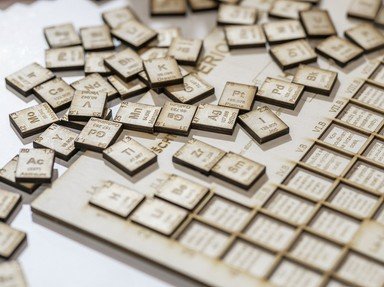Quiz Answer Key and Fun Facts
1. Tin is a relatively rare metal, comprising only about 2 parts per million of the Earth's crust. Yet it has been highly sought after since ancient times.
The first important use for tin was in the manufacture of what substance?
2. Copper is relatively plentiful in Europe and the Middle East, but deposits of tin are rare. From what modern day country did the ancients get most of their supplies of tin?
3. At normal temperatures and pressures, tin exists in two forms: white tin and gray tin. When an element exhibits different physical and chemical properties, what are the different forms called?
4. Tin has the most stable isotopes of any element. How many stable isotopes does it have?
5. One of the most common uses of tin is coating steel containers for food. Why is tin used for this purpose?
6. At very cold temperatures, objects made of tin will turn to powder.
7. Some metals are necessary in small amounts for the human body to fuction properly. These are called "trace elements" and include copper, zinc and selenium. What might happen if you ate a diet totally lacking in tin?
8. If you were building a house in the 1890's, what part of the building might you have covered in tin?
9. As we have seen, tin has been used to make a lot of things throughout the ages. Today most of the world's tin supply is used to manufacture what item?
10. Tin is a relatively scarce element. Are we likely to run out of it? Which situation most accurately describes the supply/demand situation when it comes to tin?
Source: Author
daver852
This quiz was reviewed by FunTrivia editor
crisw before going online.
Any errors found in FunTrivia content are routinely corrected through our feedback system.
